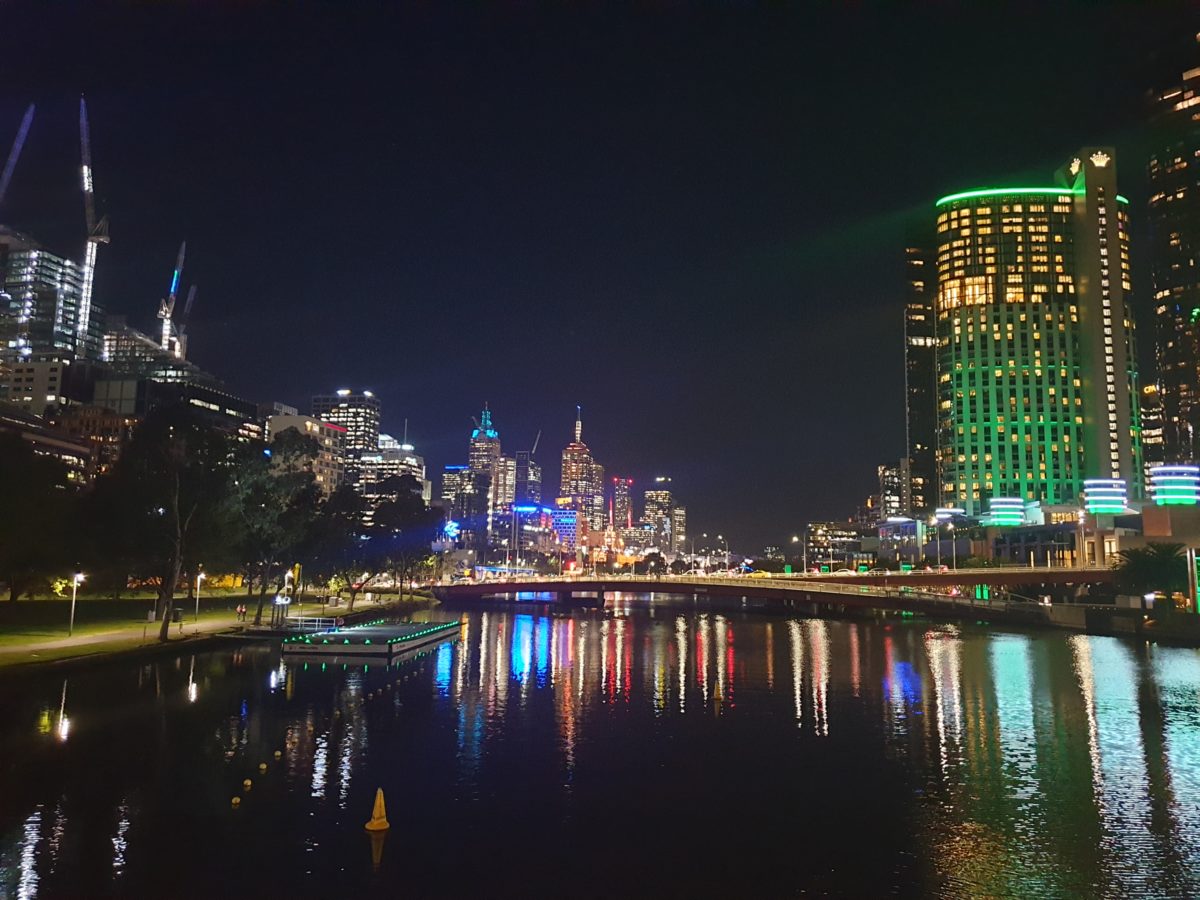REC Solar Alpha launch
At the launch of the new HJT module Alpha of #RECSolar at #AllEnergyAU pic.twitter.com/Rj2r20Uqrf
— pv magazine Australia (@pvmagazineoz) October 23, 2019
View from the trade show floor
The @SMA_Australia booth at #AllEnergyAU showcases the firm’s behemoth Sunny Central UP. pic.twitter.com/hC0XnFMe8Q
— pv magazine Australia (@pvmagazineoz) October 23, 2019
There is a party at the @FroniusAus booth at #AllEnergyAU pic.twitter.com/SY6K3wnLUO
— pv magazine Australia (@pvmagazineoz) October 23, 2019
At the @Huawei booth at #AllEnergyAU they have subjected an inverter in simulated rain to flaunt their inverter’s safety characteristics! pic.twitter.com/GLdwDLdMHt
— pv magazine Australia (@pvmagazineoz) October 23, 2019
Smart energy management is the theme at the @SolarEdgePV booth at #AllEnergyAU pic.twitter.com/MdW1PTtL3s
— pv magazine Australia (@pvmagazineoz) October 23, 2019
The @JASolarOfficial booth at #AllEnergyAU is still buzzing with activity. pic.twitter.com/jxESTOkp8O
— pv magazine Australia (@pvmagazineoz) October 23, 2019
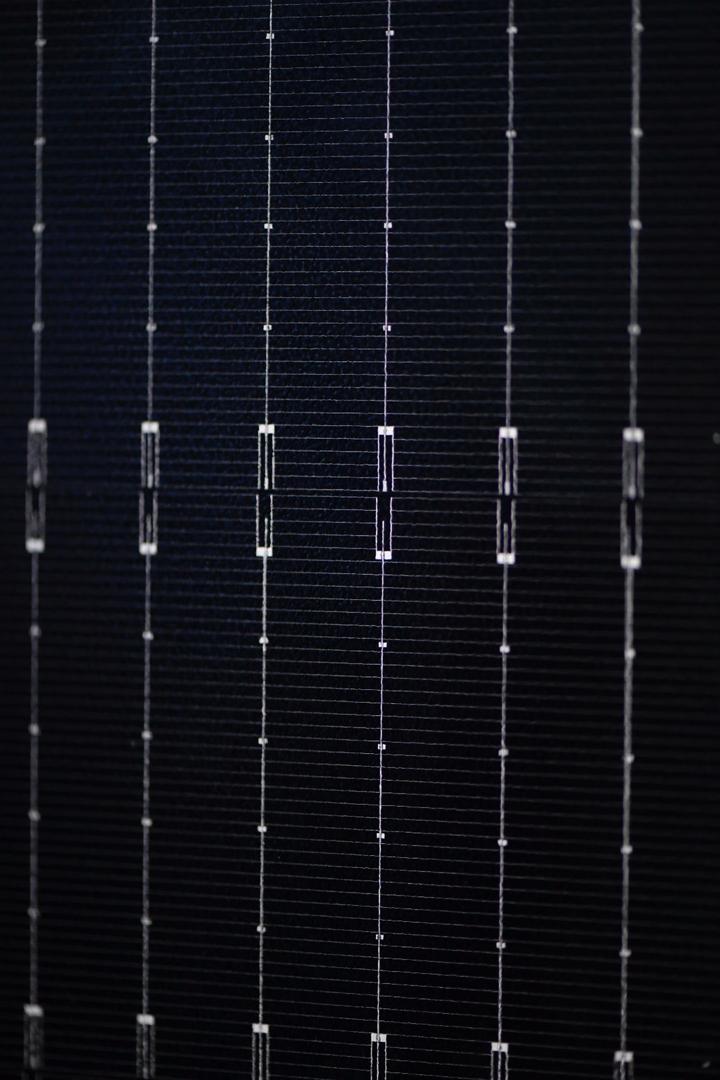
Jinko unleashes its Tiger
JinkoSolar has rolled out its second new module series for 2019, in the shape to its Tiger. The Tiger couples nine busbar cell interconnection, with half cut cells and tiling ribbon technology. With standard modules deploying a 2mm gap between cells, the Tiger slightly overlaps the cells – resulting in a reduced LCOE, Jinko claims.
The Tiger was introduced for the first time to the global solar market in Melbourne today. Jinko says that Australia is the perfect market for the technology as high labor costs and pressures on project construction timelines makes it ideal for a high powered module.
The module achieves almost 20.8% module efficiency and a power output of 460W in a 78-cell format.
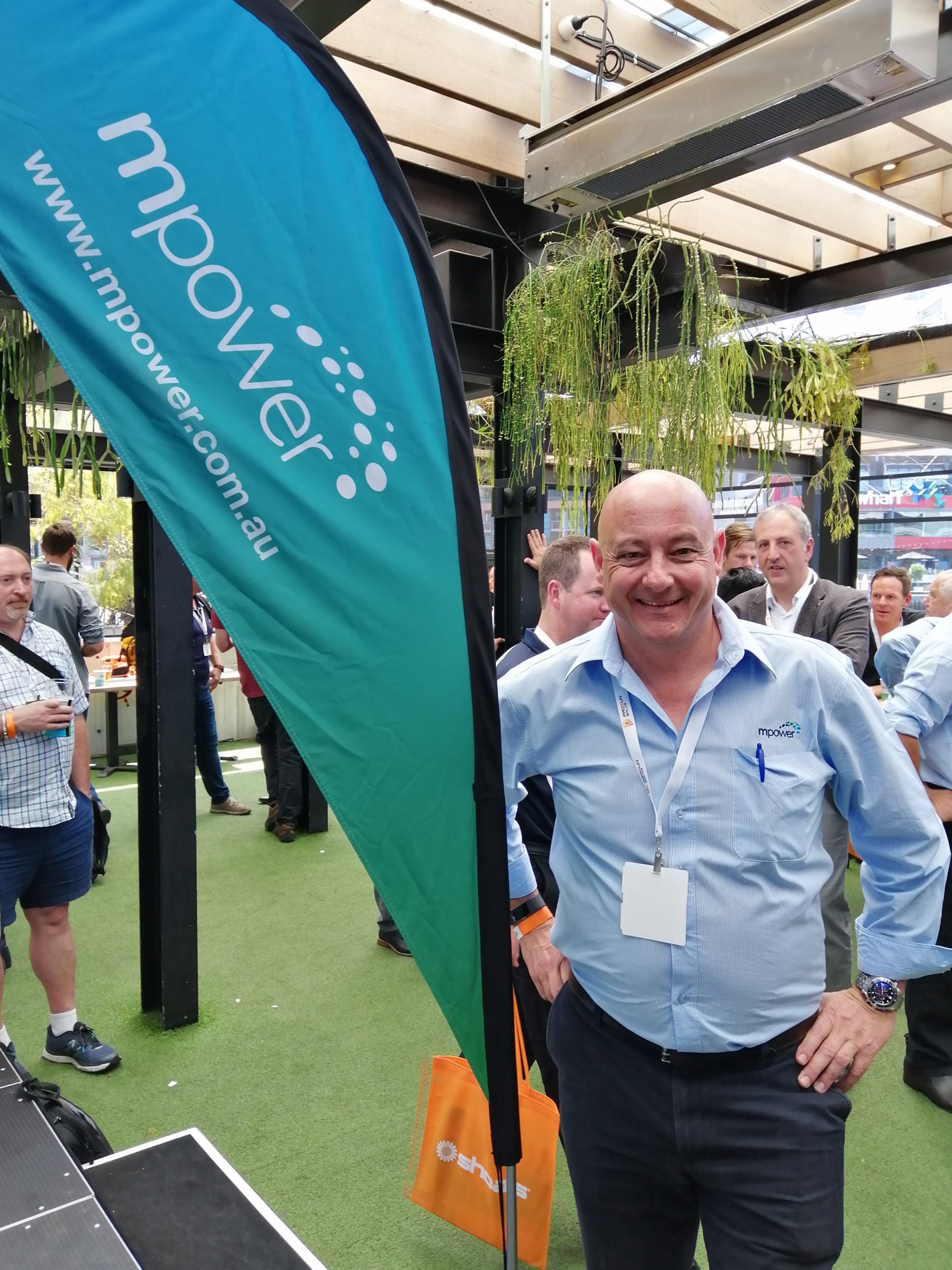
MPower goes off the beaten track
Offgrid and standalone power system experts MPower hosted an event on the sidelines of All-Energy today, its EnergyHub lunch. The event was an opportunity for the distributer to showcase the latest offerings from its established suppliers like Selectronic, and new partners like Hitachi Chemical and Cecasa.
MPower Products MD Adrian Harders said the move from the show floor to the sidelines had been a success, with more than 130 people attending the event – whereas the company’s target had been 100.
The Victoria-based company’s approach to supplying the right technology for the right customer and project. And beyond the edges of the grid, that means different battery technologies for different times.
“Our new products and partners help us to fulfil the range of products that our installers need us to,” said Harders. “We know that one technology is not right for everyone, and that’s really reflected today.
In this vein, Japan’s Hitachi Chemical presented the latest in its lead acid technology, with the company claiming that its well established technology can supply similar performance at a lower cost and longer lifetime than lithium ion. By contrast, Spain’s Cecasa is adopting lithium ion technology in a new production facility, with its modular solution able to scale from 25 kWh up to more than 20 MWh.
With bright spring sunshine beating down on the glass-roofed venue, the beers on tap at the EnergyHub venue were no doubt well received also.
Without storage, renewables will not reach its potential
“Without storage, renewables will not reach its potential.” – Mohamed Mostafa, Business Development Manager of Industrial Storage Solutions @SMA_Australia at #AllEnergyAU pic.twitter.com/v4m8wrETwY
— pv magazine Australia (@pvmagazineoz) October 23, 2019
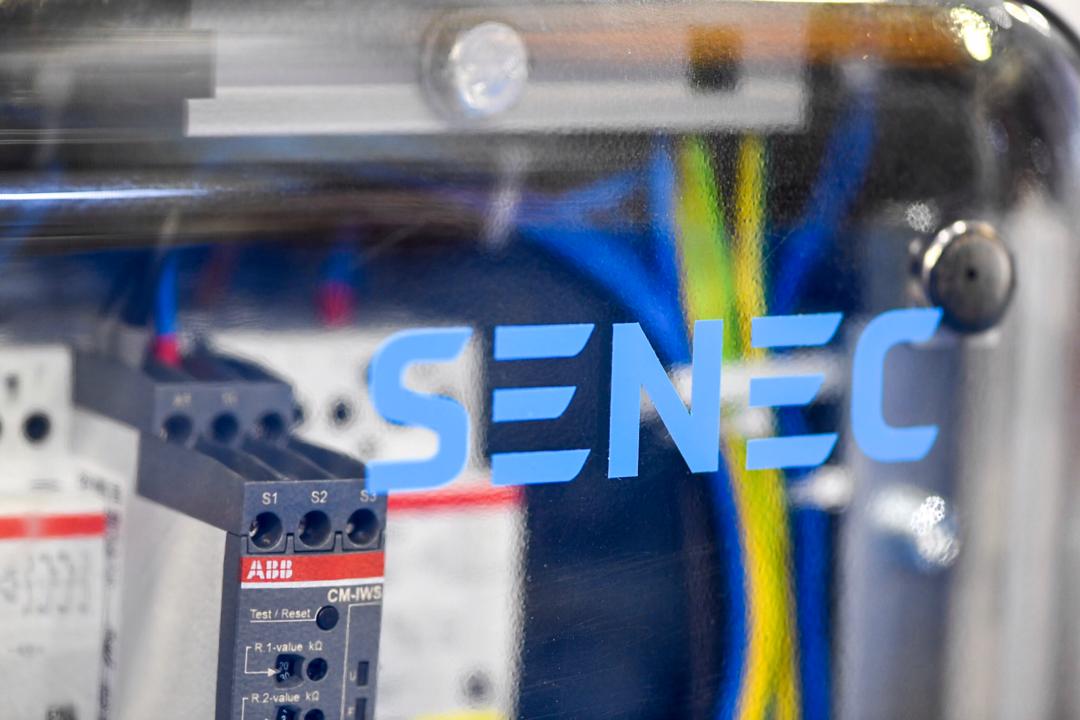
First of a battery of launches...
The All Energy Australia conference could run on the new batteries being launched here today. That said, Jaron Shächter, Managing Director of Senec GmbH, emphasised “This is not a battery!” at the launch of the new Senec.Home V3 Hybrid, which promises homeowners that they may only need to draw 10% of their current energy usage from the grid.
pv magazine: How is it hybrid?
Jaron Shächter: The Senec.Home V3 Hybrid is a combined PV inverter and battery inverter, so an additional PV inverter is not required. The hybrid inverter converts both the current flowing from the PV panels into the storage system and the current discharged from it. This gives the battery 97.4% efficiency, and saves the customer having to buy a PV inverter.
pv magazine: What sets this new entrant apart in the Australian market?
JS: One of the key reasons home owners haven’t been installing batteries is that the warranty on batteries has been half that of the solar panels, so our product comes with a 20-year warranty.
An essential part of the intelligent energy management system integrated with this product is that it not only takes into account the individual consumption patterns, but can also charge the storage system based on accurate weather forecast data and plant-specific properties.
pv magazine: You launched at Intersolar, but you’ve modified the product for the Australian market?
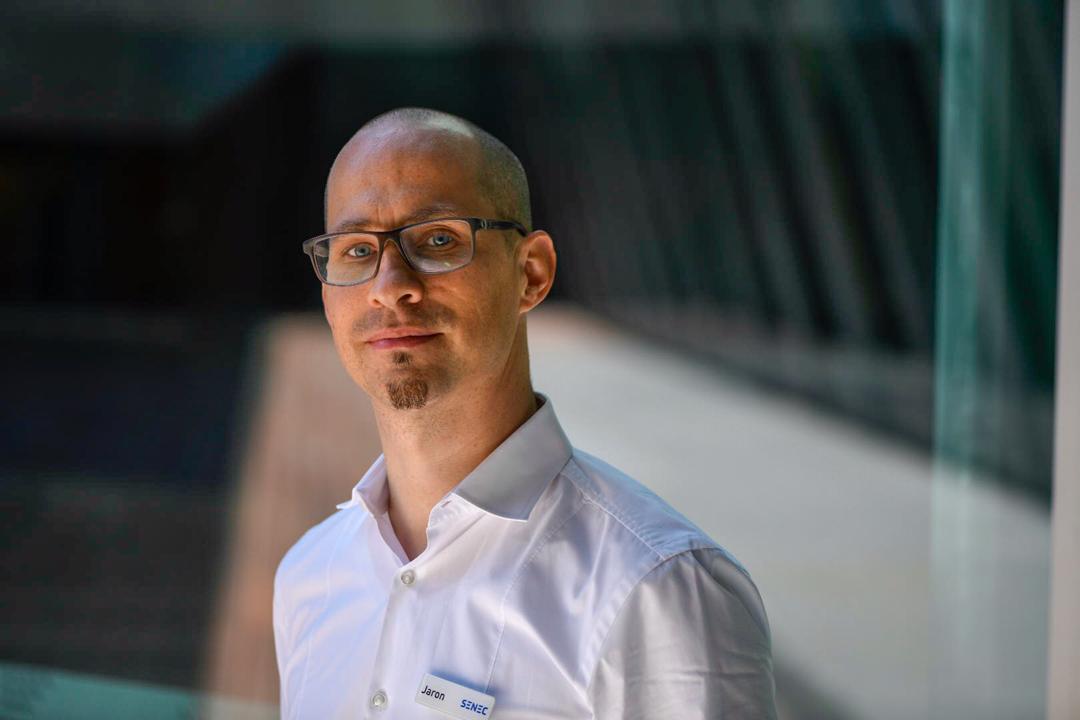
JS: We have a different battery module that’s sturdier to allow us to offer the 20-year warranty, and also the back-up power is obviously a much more important feature in Australia than it is in Italy or Germany. And third is it’s not as deep as the product for the German market. We heard from our installers that Australians like to install their battery in the space next to the garage door, so …
pv magazine: Where does Senec sit in the hotter than hot battery market?
JS: We are not a battery, we’re an intelligent, fully integrated storage system. We aim to be the most price competitive in the premium range. Our VPP readiness is part of why we are example to do groundbreaking things with Horizon Power in Onslow.
pv magazine: Tell us about that project
JS: The Onslow community in WA will be fully based on renewables, with a centralised solar plant, centralised storage, but also decentralised solar plants — and Senec is the system of choice for the decentralised part. We are going to power up to 25% of the homes in Onslow, and then Horizon has the ability to centrally communicate and give commands to all the different components in the set up. It should really lead the way of how you can do renewables without getting into trouble with your grid.
View from the trade show floor
A view from the trade show floor at #AllEnergyAU pic.twitter.com/HDHa3yUZ94
— pv magazine Australia (@pvmagazineoz) October 23, 2019
"A marriage, not a transaction"
“It is a 30-year marriage – not just a transaction.” Marty Rogers from @NEXTracker discussing relationships in the solar industry at our #QRTOz at #AllEnergyAU pic.twitter.com/MiievSdkB3
— pv magazine Australia (@pvmagazineoz) October 23, 2019
Shi Zhengrong and Jonathan Gifford at our Quality Roundtable
@jonogifford with Shi Zhengrong at our fascinating #QRTOz at #AllEnergyAU. Thank you to all our sponsors: @DuPont_Solar @NEXTracker @staubligroup @CEA_Global @longi_solar #LEONI @SolarEdgePV @JinkoSolarCoLtd pic.twitter.com/CyUbi3wtkp
— pv magazine Australia (@pvmagazineoz) October 23, 2019
Do our tests really model real-world conditions?
“Do we need to adapt the standards for accelerated ageing to better replicate real conditions in the field?” Great questions from the audience at #QRTOz at #AllEnergyAU pic.twitter.com/QlkXoj8NzY
— pv magazine Australia (@pvmagazineoz) October 23, 2019
LeTID is an issue with all high-efficiency technologies
Robust and interesting discussions at our #QRTOz at #AllEnergyAU. Come visit us at Theatre 2. Professor Martin Green is discussing current technology developments. pic.twitter.com/3FK61Q2JKY
— pv magazine Australia (@pvmagazineoz) October 23, 2019
Backsheets' impact on quality
Sandy Pulsford from @cleannrgcouncil discusses the vast range of backsheets available on the market and what to look out for at our #QRTOz at #AllEnergyAU pic.twitter.com/NQUpz9xK23
— pv magazine Australia (@pvmagazineoz) October 23, 2019
Electrical safety risks
Lior Handelsman from @SolarEdgePV discusses how to mitigate electrical safety risks in various inverter architectures and how to mitigate them at our Quality Roundtable at #AllEnergyAU pic.twitter.com/KGd7Xge0b5
— pv magazine Australia (@pvmagazineoz) October 23, 2019
Quality Roundtable at Theatre 2
If you’re on the trade show floor, you can still come to our Roundtable at Theatre 2 up the back right. Sponsors: @DuPont_Solar @NEXTracker @staubligroup @CEA_Global @longi_solar #LEONI @SolarEdgePV @JinkoSolarCoLtd pic.twitter.com/uoDpDKiRBH
— pv magazine Australia (@pvmagazineoz) October 23, 2019
"Who owns your data?"
Panel discussions at #AllEnergyAU: “Who owns your data? And how will you be able to port it between various systems and companies?” pic.twitter.com/daackLyfLx
— pv magazine Australia (@pvmagazineoz) October 22, 2019
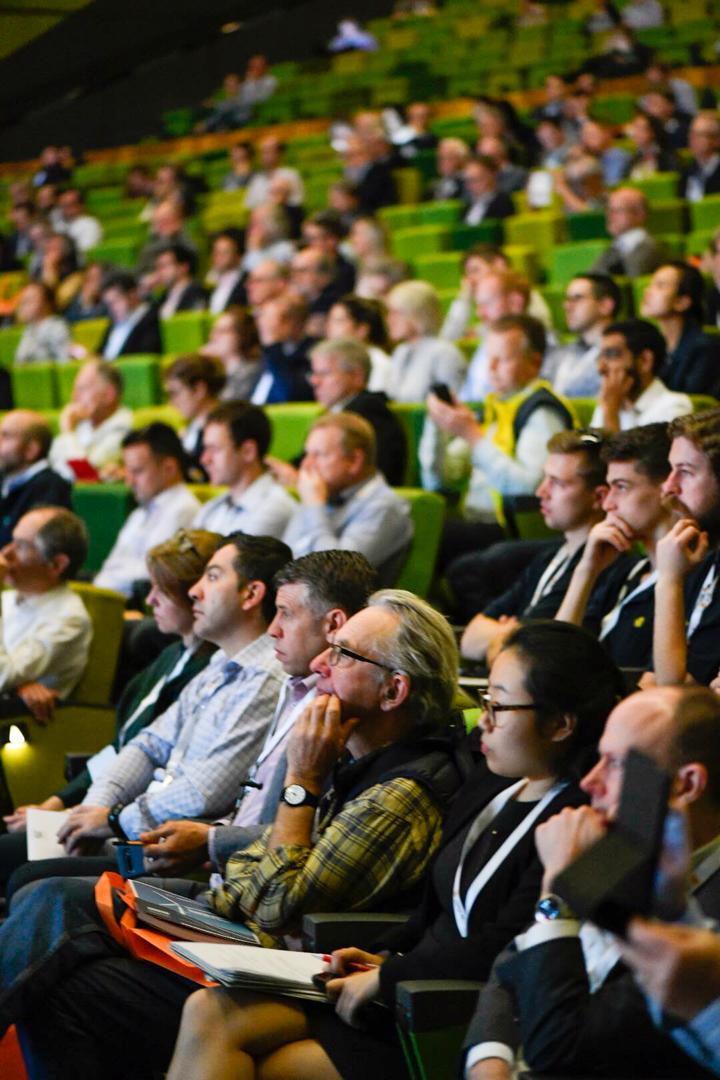
Opening plenary summary
There were a range of great presenters across the spectrum through the opening plenary at All Energy Australia, as well as a number of common themes that emerged.
Kane Thornton from the Clean Energy Council discussed the importance of policies to drive the energy transition. He is optimistic that Australia could become a “global energy superpower” if it puts the right initiatives in place and leverages two key things: “leadership and collaboration”.
This idea was echoed throughout the plenary. Richard Adams from NREL also thinks Australia is well poised to lead the energy transition, but it needs planning around integrating all of the new technologies, recycling waste, and moving toward more sustainable materials across the value chain.
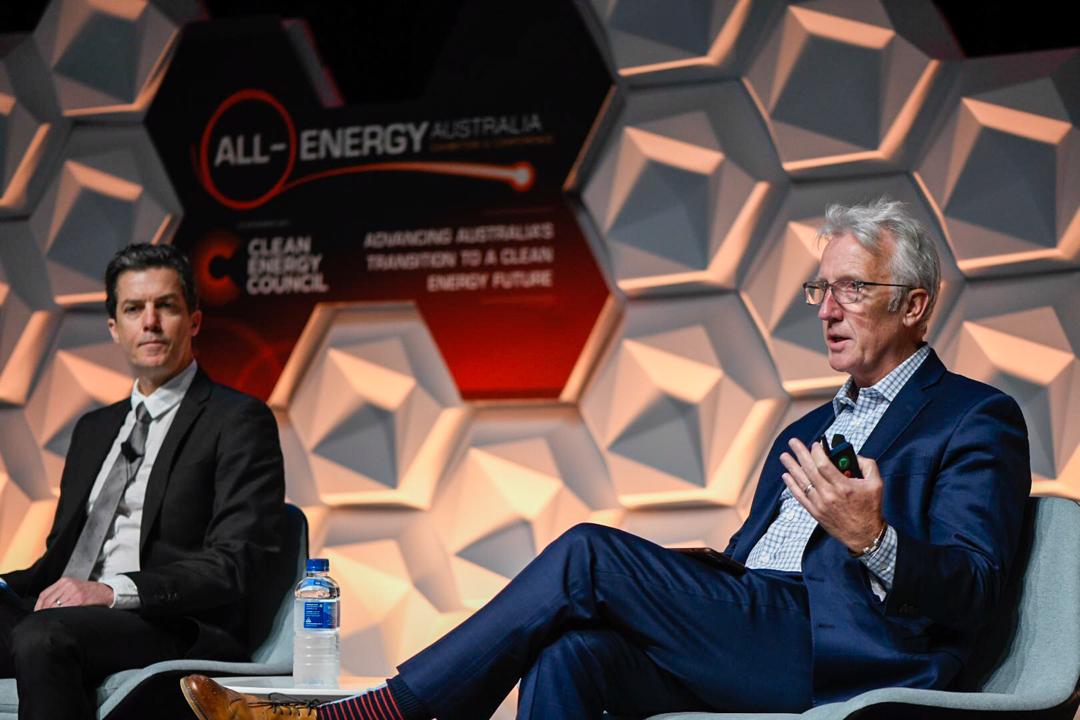
Tim Finnigan from CSIRO discussed the Australian National Outlook which models scenarios for what Australia will be like in 2060, based on “real science – hard science.” The research project arrived at two possible scenarios: There will be a “slow decline” if no action is taken. But it also offers the far more optimistic “Outlook Vision” which would require five broad changes across Australian society:
- Moving to highly technical and skills-based industries.
- Increasing density in urban cities. This would drive efficient mass transportation, reduce sprawl, and concentrate populations.
- Optimising use of arable land to sequester carbon and make agriculture twice as productive.
- Changing culture. We need to cultivate a sense of entrepreneurship and embrace and celebrate change.
- We need a shift in the way we produce, store, and consume energy. There will continue to be more and more new opportunities and technologies that Australia must embrace and integrate into its system. It is crucial to rapidly integrate new technologies and stay ahead of the curve.
Finnigan went on to say that although Australia is not responsible for as many emissions as some larger countries, it “is a major player in the energy sector globally.” The CSIRO is further contributing to Australia’s transition with its “digital twin” which models the entire electricity system throughout Australia in a virtual digital model. They can then use predictive analytical tools to determine what would result from a given change to the system, such as closing a coal-fired power plant. Like all speakers, Finnigan once again emphasised shifting the focus to the “long-term picture” rather than simply thinking about “next summer”. All of us in the energy industry and beyond need to think creatively about how we can shift the mentality toward this longer-term vision.
The Honourable Lily D’Ambrosio, Victorian Minister for Energy, Environment and Climate Change and Minister for Solar Homes, added it is important that the policies that drive the energy transition also “don’t leave anyone behind.” She discussed a number of policies from the Andrews government including a range of regional energy storage and frequency control projects, as well as the $1.3 billion Solar Homes program that has funded 770,000 solar systems to date.
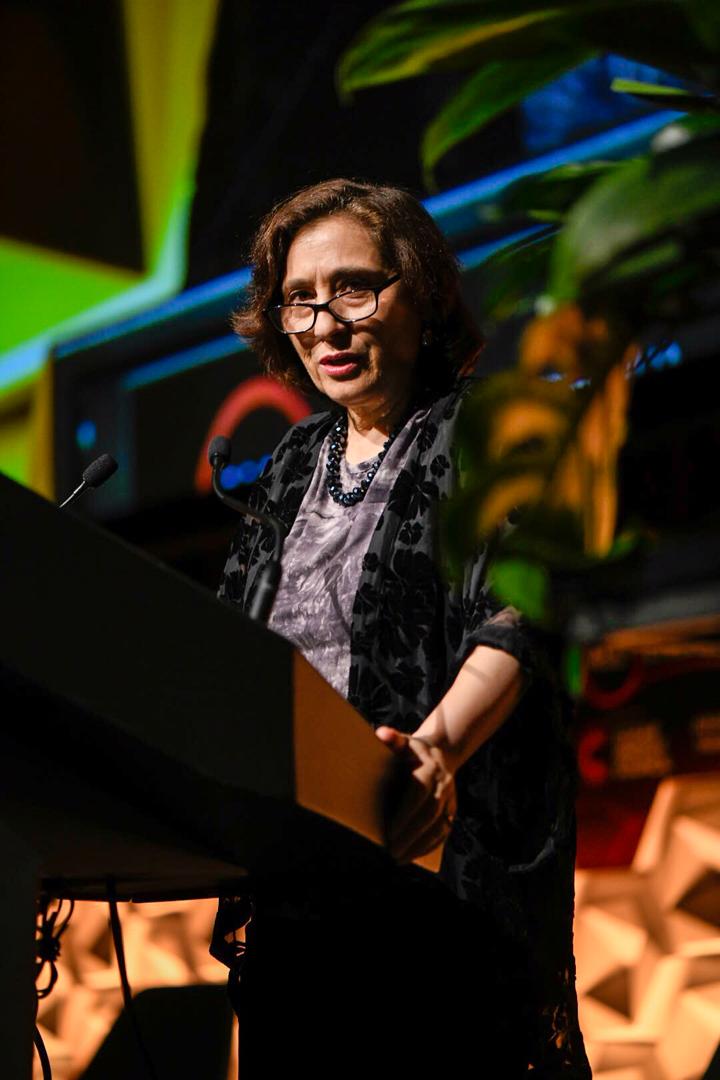
The MP also championed the work her government has done in protecting consumers from fluctuating energy prices and helping them understand the retail offers in the market so they can make more informed decisions.
Finally, she discussed the major weakness in Australia’s energy policy: “the National Energy Framework is out of date.”
The topic of Australia’s policy landscape was bouncing off the walls throughout all presentations. And the Hon D’Ambrosio as well as Luke Menzel from the Energy Efficiency Council reminded us that at the state level ambitious plans have been put into place. So it appears the next step is putting a strong national plan in place to give all market players a clear and consistent path forward. And CSIRO’s Finnigan talked about exactly what that plan would look like.
It was a great introduction to what will surely continue to be a fantastic show. We hope to see you around the presentations or on the trade show floor. Keep following here for a play-by-play summary of what’s happening on the ground at All Energy Australia.
And the panel discussion begins
The panel discussion now begins at #AllEnergyAU with some cheeky oneupmanship between Kane Thornton from @cleannrgcouncil and Luke Menzel CEO of @EECouncil pic.twitter.com/SUzvqI1ETu
— pv magazine Australia (@pvmagazineoz) October 22, 2019
Lily D'Ambrosio, Victorian Minister for Energy, Environment and Climate Change
At the #AllEnergyAU plenary, @LilyDAmbrosioMP contrasts the dynamism of the renewable energy industry with some institutions that are struggling to keep up. pic.twitter.com/q66G7cT61Z
— pv magazine Australia (@pvmagazineoz) October 22, 2019
Democratisation of energy
“Once we start to distribute assets, they are embedded in our communities. We must engage with them to get consent to democratise #energy.” – Prof. David Shipworth @UCL_Energy at #AllEnergyAU pic.twitter.com/LYTCMP135j
— pv magazine Australia (@pvmagazineoz) October 22, 2019
Kane Thornton from the Clean Energy Council
“#Australia can become a global energy superpower. What we need to achieve this is #leadership and #collaboration.” – Kane Thornton from the @cleannrgcouncil at #AllEnergyAU pic.twitter.com/RWqMJnMucT
— pv magazine Australia (@pvmagazineoz) October 22, 2019
All Energy Australia has begun!
People are trickling into the Grand Plenary Hall at #AllEnergyAU for the opening presentation. And so it begins! pic.twitter.com/qiPWogFErC
— pv magazine Australia (@pvmagazineoz) October 22, 2019
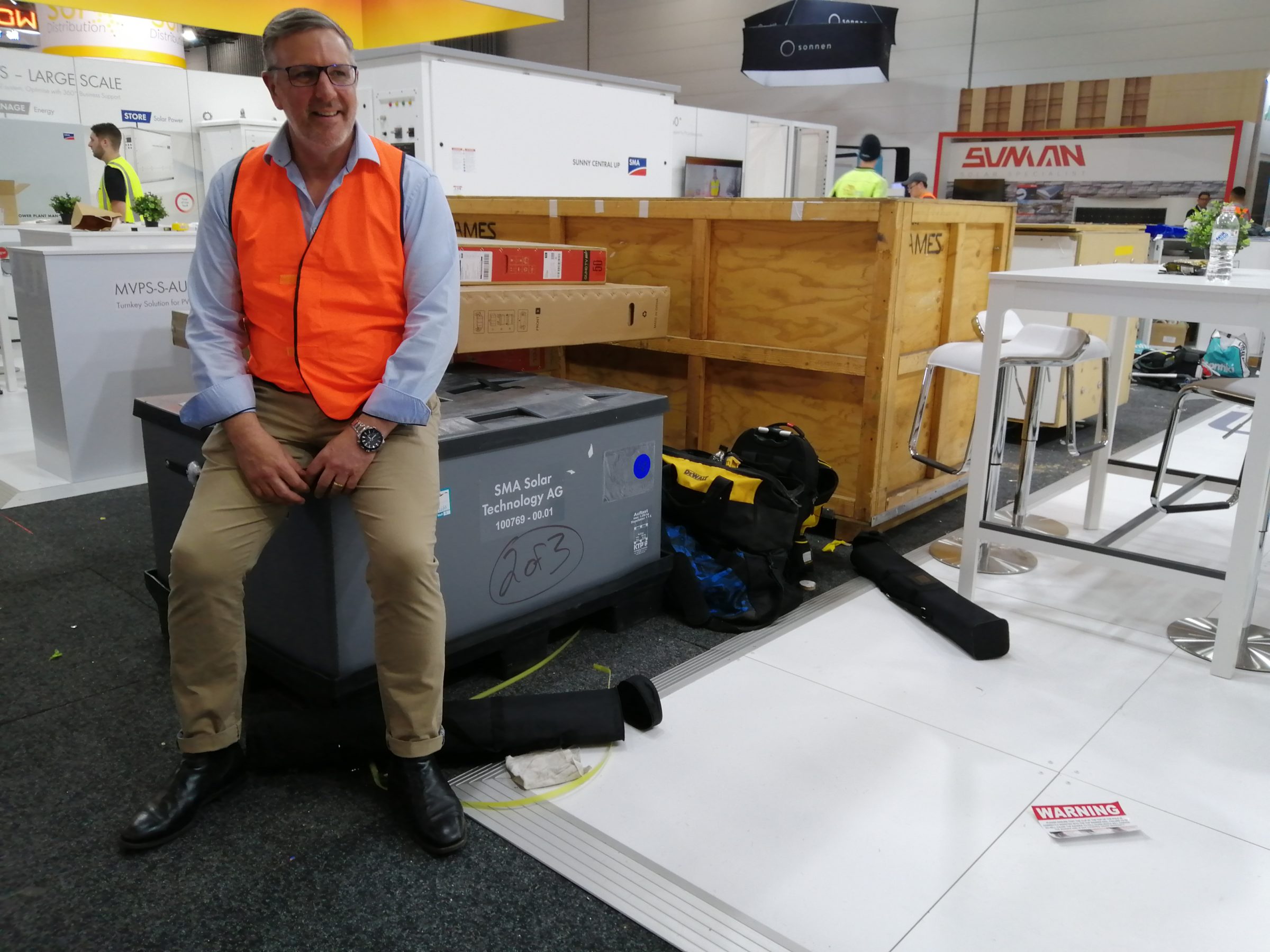
Bigger booths, bigger show, loads of new products on display
With the dust literally setting on freshly constructed booths on the showroom floor, it’s clear that All-Energy 2019 is bigger and slicker than ever.
SMA Australia Managing Director Michael Rutt noted that many companies have enhanced the manner in which they are presenting themselves to the around 8,5000 solar professionals set to descend on the All-Energy tomorrow.
SMA itself has its biggest ever booth in Australia. The company is presenting a host of new products for all market segments for the first time. Check out this quick preview from Marija Maisch of what SMA is unveiling:
Highlights include SMA’s enhanced engineering service offering for large scale project developers, to assist with project modelling and grid connection, and software upgrades to its residential inverters to optimise rooftop array power output in the event of shading.
More on these over the next two days.
Solar Cutters Awards Night
@jonogifford and Paul Z caught up with Jack “Longy” Long at the amazing Solar Cutters Awards Night. Follow us for regular updates on #AllEnergyAU as it kicks off tomorrow! pic.twitter.com/5785ARFbzg
— pv magazine Australia (@pvmagazineoz) October 22, 2019

